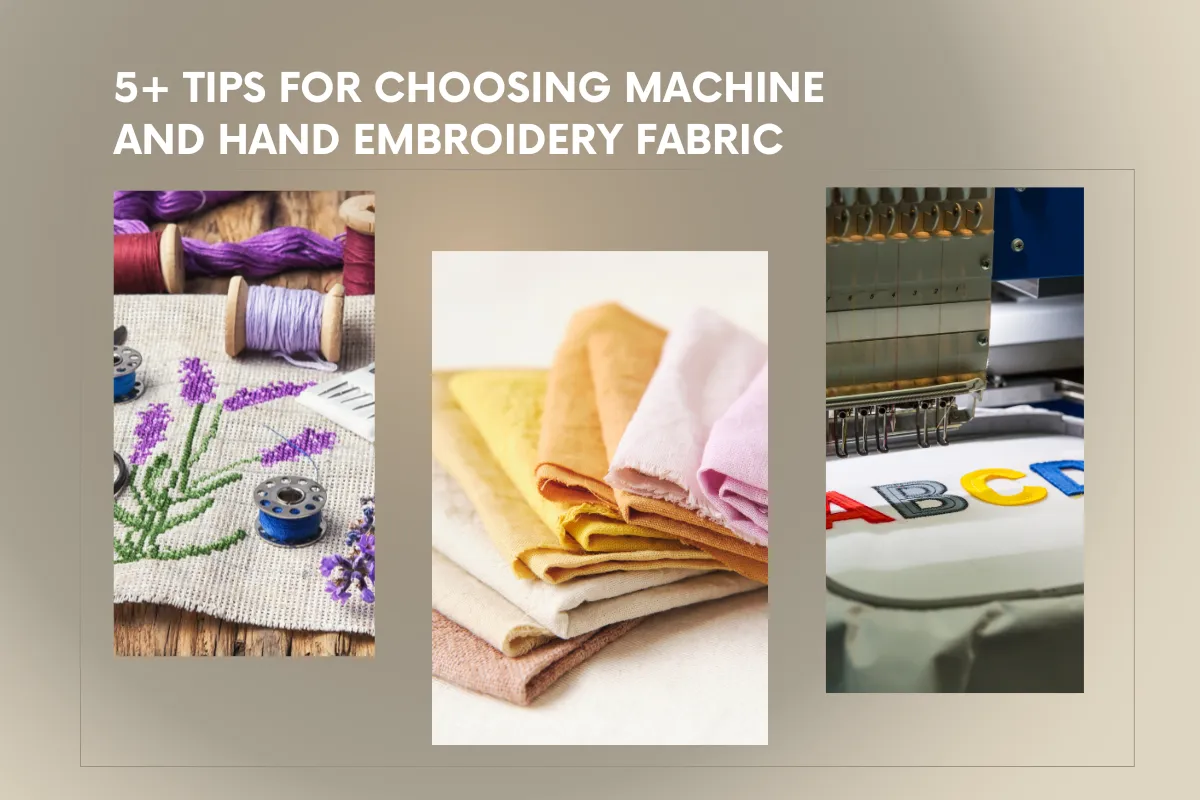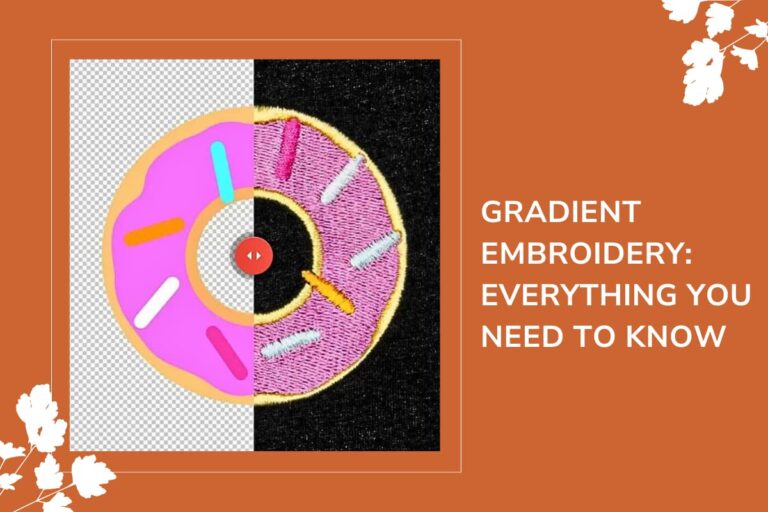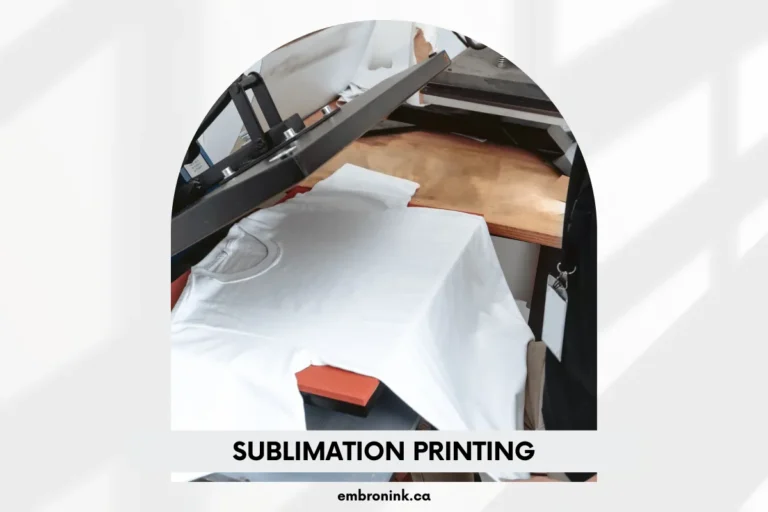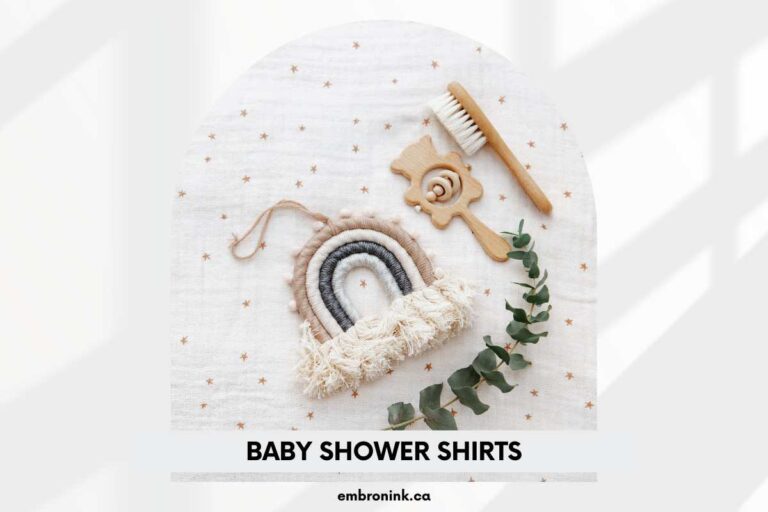5+ Tips for choosing machine and hand embroidery fabric
Fabric is one of the most important materials in both hand and machine embroidery, significantly impacting the final result. Therefore, selecting the best embroidery fabric is crucial. However, with so many fabrics available in different materials, colors, and shades, choosing the right one can become confusing and challenging. In this article, EmbroInk will help you understand how to choose the most suitable fabric for hand and machine embroidery.
What is embroidery fabric?
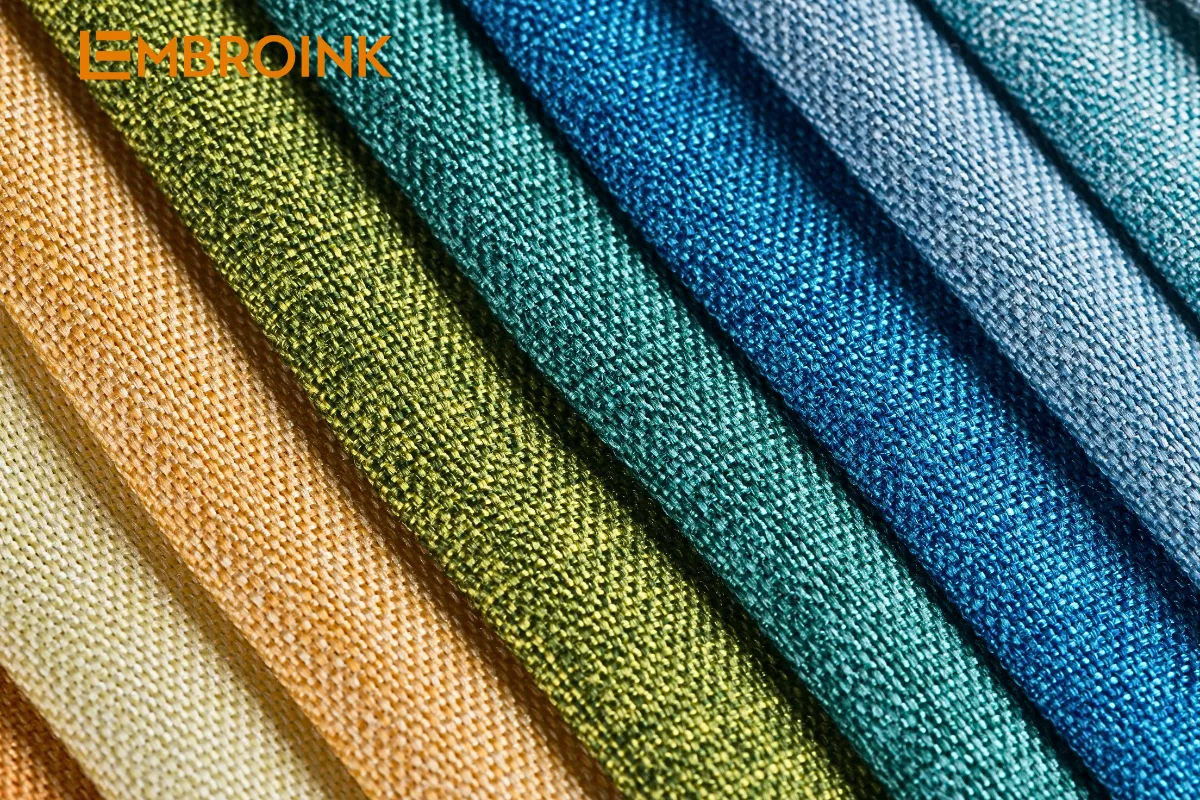
Embroidery fabric is a specialized type of fabric designed for use in the art of embroidery. It is constructed with specific characteristics that make it suitable for both hand and machine embroidery. Embroidery fabrics are typically made from natural fibers such as cotton, linen, or synthetic fibers like polyester.
Common features of embroidery fabrics include:
- Smooth and soft texture: Embroidery fabrics often have a smooth and soft surface, allowing the embroidery needle to pass through easily without damaging the thread.
- Durability and stability: These fabrics are known for their high durability and minimal stretching after embroidery, ensuring that the completed embroidery maintains its shape and color over time.
- Appropriate thickness: Embroidery fabrics are typically of medium thickness, sufficient to prevent the needle from piercing through but not too thick to hinder embroidery work.
- Water resistance: Embroidery fabrics usually have good water resistance, which is important for post-embroidery washing to prevent color fading or distortion of the embroidered design.
Various types of embroidery fabrics can be chosen based on the specific embroidery techniques and projects, ranging from simple lettering and floral designs to intricate artistic embroideries.
Type of hand embroidery fabric
In theory, you can choose any type of fabric for your embroidery project. Some people even embroider on paper, leaves, tree bark,… The options may be even more diverse than you expect.
A more precise answer is a list of fabrics you can use for your hand embroidery projects: cotton fabric, linen fabric, silk fabric, canvas fabric, wool fabric, raw cotton fabric, rayon, polyester,…
Most types of fabric can be used for hand embroidery. However, they each have their drawbacks. Some choices may be more suitable for specific features or embroidery techniques. There’s no one-size-fits-all formula for these choices, but there are many ways to narrow down your options.
Type of machine embroidery fabric
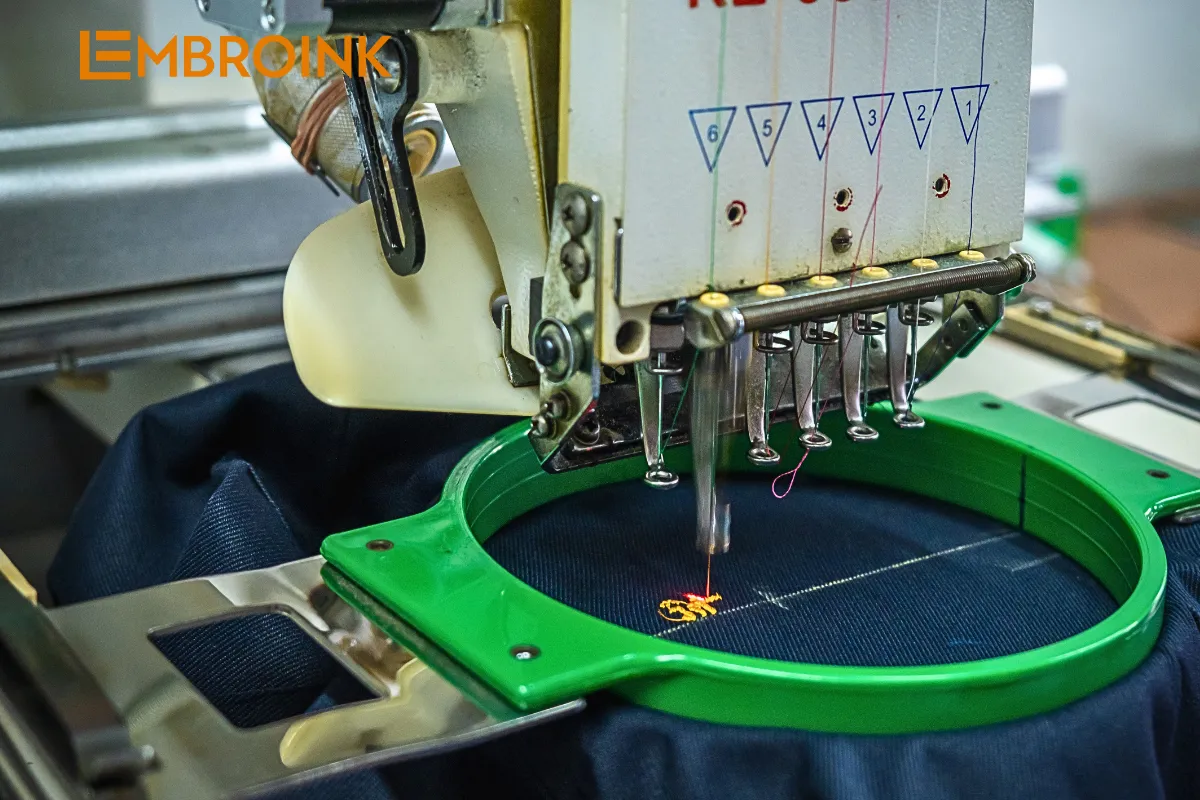
Machine embroidery fabric refers to fabrics specifically chosen and prepared for use with embroidery machines. These fabrics are typically selected based on their ability to withstand the embroidery process and to hold the stitches well. Here are some common types of machine embroidery fabric:
- Cotton: A versatile and commonly used fabric that is suitable for a wide range of embroidery projects. It is durable and provides a smooth surface for stitching.
- Linen: Known for its strength and natural texture, linen is a great choice for machine embroidery, especially for heirloom and traditional projects.
- Silk: A luxurious fabric that offers a smooth and shiny surface, making it ideal for intricate and delicate embroidery designs.
- Canvas: A heavy-duty fabric that works well for embroidery projects requiring a sturdy base, such as tote bags and home decor items.
- Polyester: A synthetic fabric that is durable and resistant to shrinking and stretching. It is often used for clothing and other items that need to withstand frequent washing.
- Rayon: Another synthetic fabric that is smooth and lightweight, making it suitable for detailed embroidery work.
- Denim: A robust fabric that can handle dense embroidery designs, often used for fashion and accessories.
- Organza: A sheer and lightweight fabric that is often used for decorative embroidery, adding an elegant touch to projects like overlays and bridal accessories.
- Terrycloth: A soft and absorbent fabric, commonly used for towels and bathrobes, where embroidery can add a personalized touch.
- Felt: A non-woven fabric that is easy to work with and provides a stable base for embroidery, often used for crafts and appliqué.
Each type of fabric has its own characteristics and is suitable for different types of machine embroidery projects. The choice of fabric depends on the specific requirements of your design and the intended use of the embroidered item.
How to choose embroidery fabric?
Selecting the appropriate fabric for your embroidery project is crucial to achieving the best results. Here are some tips to help you choose the right embroidery fabric:
Consider the type of embroidery
- Hand Embroidery: Choose fabrics like cotton, linen, silk, or wool that have a smooth and even weave. These fabrics provide a stable surface for your stitches and allow the needle to pass through easily without snagging or causing uneven tension. Cotton and linen are particularly popular for their durability and ease of use, while silk and wool can add a luxurious touch to your projects.
- Machine Embroidery: Opt for fabrics like cotton, polyester, rayon, or canvas that can withstand the speed and pressure of an embroidery machine. These fabrics are strong enough to hold up to the repeated needle penetrations and the weight of the thread. Polyester and rayon are particularly good choices for their durability and resistance to shrinking and stretching, while canvas is excellent for heavy-duty projects.
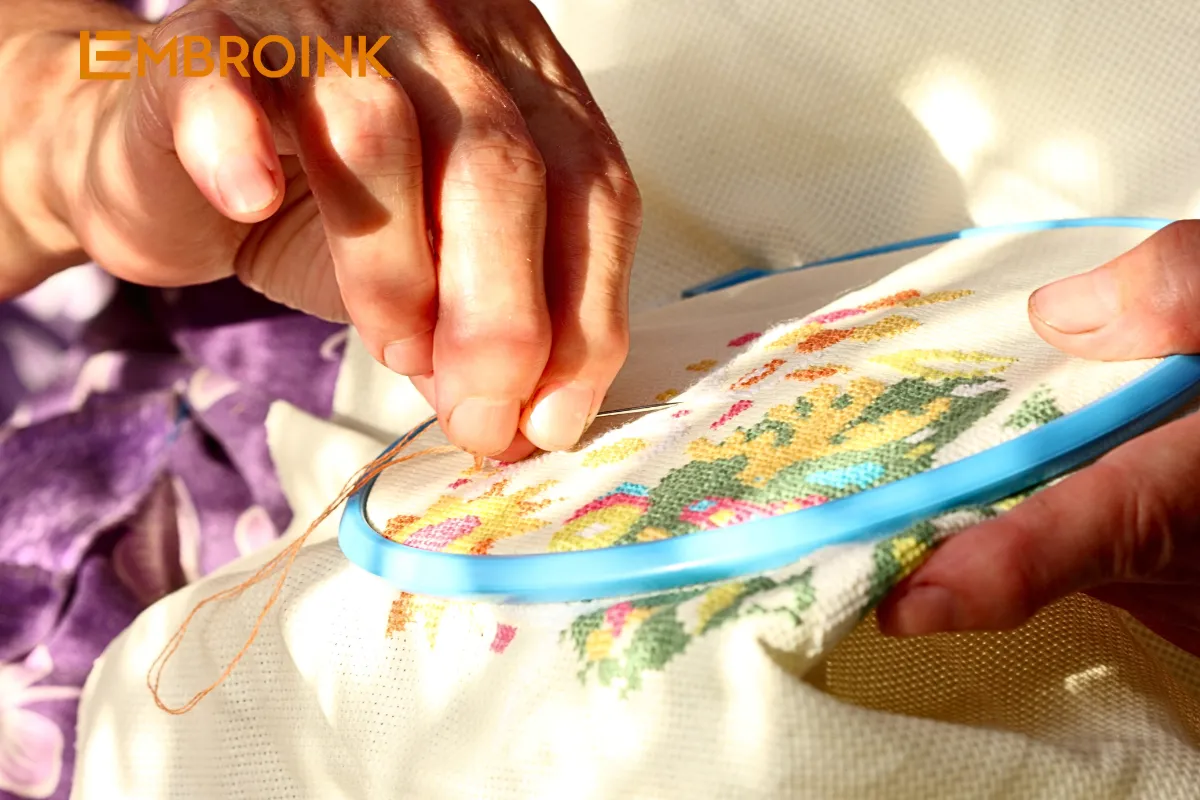
Fabric weight
- Lightweight fabrics such as cotton and linen are ideal for delicate and detailed embroidery. These fabrics are easy to handle and allow for fine, intricate stitches.
- Heavier fabrics like denim or canvas are better for projects that require durability and support for dense stitching. These fabrics can handle more substantial thread work and are perfect for items that will experience a lot of wear and tear.
Weave and texture
- Fabrics with a tight weave, like quilting cotton, provide a smooth surface for precise stitching. The even weave helps maintain the uniformity of your stitches and prevents the fabric from puckering.
- Looser weaves, such as burlap or linen, add texture but may require additional support like stabilizers. These fabrics can give your embroidery a rustic or vintage look, but the looser weave means they need extra care to ensure your stitches stay in place.
Color and design
- Choose a fabric color that complements or contrasts well with your embroidery thread colors. The right color combination can make your design stand out and look more vibrant.
- Consider the design and purpose of your project when selecting the fabric pattern and texture. For example, a plain fabric might be best for intricate designs, while a patterned fabric can add depth and interest to simpler embroidery.
Stability
- Fabrics that do not stretch are easier to work with and maintain the integrity of the embroidery design. Non-stretch fabrics like cotton and linen are less likely to distort as you work.
- If using stretchable fabrics like knits, be sure to use appropriate stabilizers to prevent distortion. Stabilizers can help keep the fabric taut and support the embroidery stitches.
Durability
Select durable fabrics that can withstand the wear and tear of the intended use. For example, use terrycloth for towels and cotton for everyday items. Durable fabrics ensure your embroidered items last longer and maintain their appearance over time.
Ease of handling
- Choose fabrics that are easy to handle and do not fray excessively. Fabrics like cotton and linen are relatively easy to work with and don’t require extensive finishing to prevent fraying.
- Pre-wash and iron the fabric to remove any sizing or shrinkage before starting your embroidery project. This step helps ensure that your fabric doesn’t shrink or change texture after you’ve completed your embroidery.
Purpose of the project
Match the fabric to the purpose of your project. For instance, use soft and absorbent fabrics for baby items and sturdy fabrics for home decor. The right fabric choice enhances the functionality and durability of your embroidered piece.
Personal preference
Ultimately, choose a fabric that you enjoy working with and that suits your style and preferences. Your comfort and satisfaction with the fabric will make the embroidery process more enjoyable and productive.
Test before starting
If unsure, test a small section of your fabric with the embroidery design to see how it holds up and how the final result looks. This can prevent any surprises and help you make any necessary adjustments before committing to the entire project.
By considering these factors, you can select the best fabric for your embroidery project, ensuring that your finished work is both beautiful and durable.
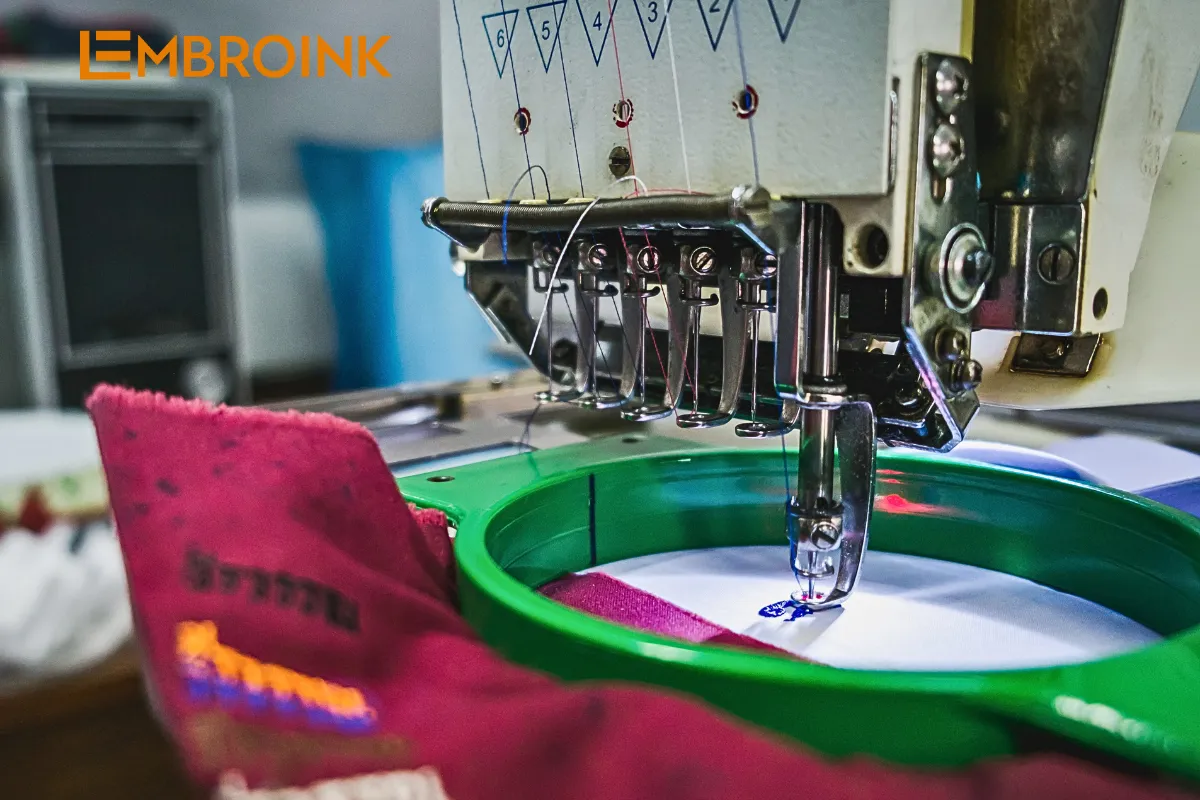
Tips for choosing the right embroidery fabric
One of the worst things that can happen to your embroidery project is wrinkling. Don’t worry! Here are some tips to help you avoid this issue:
- Be careful with stretchy fabrics: If you want to embroider on stretchy fabrics like knits, use a stabilizer or backing underneath the embroidery. This will help keep the fabric stable and prevent wrinkling after the embroidery is done.
- Ensure fabric tension in the hoop: When placing the fabric in the hoop, make sure it is evenly stretched. If you notice the fabric is no longer tight, pull it taut from the sides but avoid pulling from the corners, as this can cause distortion and eventually lead to wrinkling.
- Prevent wrinkles after washing: Wrinkles can occur when washing embroidered items, especially if the fabric shrinks too much. Shrinkage is common with natural fabrics like cotton and linen. To prevent this, wash and iron the fabric before starting your embroidery.
- Choose high-quality fabric: Investing in high-quality fabric will help you avoid many problems. Low-quality fabric can tear easily, shrink, and wrinkle. Choose fabrics like high-grade cotton, linen, or specialized embroidery fabrics to ensure your project is durable and looks beautiful.
- Check fabric stretch: Before starting your embroidery, check the stretch of the fabric by pulling it lightly in different directions. If the fabric stretches, use an appropriate stabilizer to keep the fabric from distorting during embroidery.
- Soften fabric before embroidering: If the fabric is too stiff, wash and soften it before embroidering. This makes it easier for the needle to pass through the fabric and reduces the risk of tearing or damaging the fabric during the embroidery process.
- Use an appropriate embroidery hoop: Use an embroidery hoop that fits the size and type of fabric you choose. The hoop helps keep the fabric evenly taut and stable, allowing you to make precise stitches.
- Consider fabric color and pattern: Choose fabric colors and patterns that complement your embroidery design. Avoid fabrics with overly complex patterns if your embroidery design is also intricate, as this can detract from the embroidery’s visibility.
- Test before starting a large project: Before starting a large embroidery project, test on a small piece of fabric to ensure you are satisfied with the fabric type and your embroidery technique.
- Proper fabric care and storage: After completing your embroidery, wash and store the fabric properly to keep your work looking beautiful and lasting long. Avoid using harsh detergents and either hand wash or use a gentle cycle if using a washing machine.
By keeping these tips in mind, you can select the best fabric for your embroidery project and ensure your work will be both beautiful and long-lasting.

